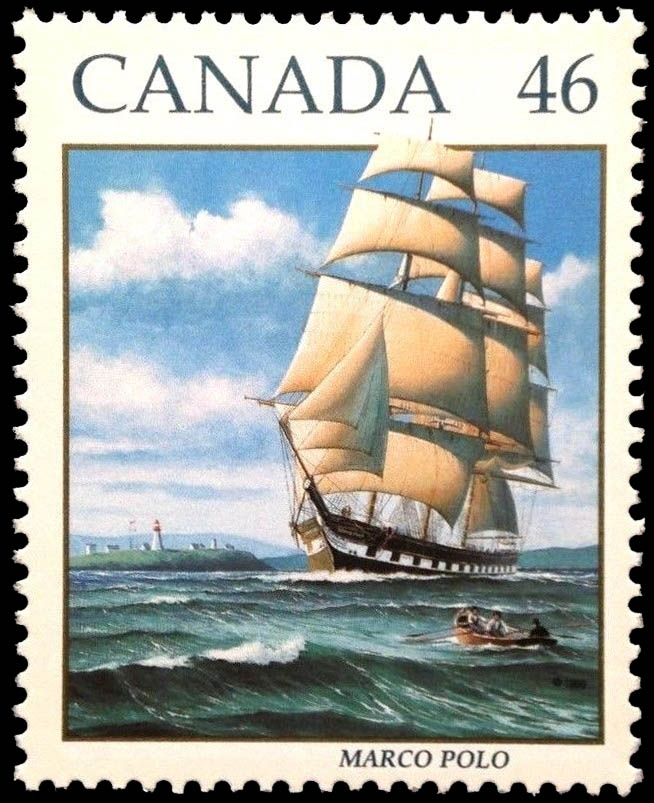On today’s date in 1254, Italian merchant Marco Polo, known for his far-reaching travels through Asia, was born in the Republic of Venice.
The three-masted wooden clipper ship Marco Polo, which owes its name to Marco Polo – the man – was commemorated by Canada Post in March 1999.
The ship, which launched in 1851 at Saint John, N.B., is depicted on a 46-cent multi-coloured stamp (Scott #1779) available as a 16-stamp pane plus a two-stamp souvenir sheet (SC #1779a) featuring a joint issue from Australia. Printed by Ashton-Potter on Tullis Russell paper using six-colour lithography, the Canadian stamp was designed by A. Lee Sackett based on a painting by J. Franklin Wright and has general tagging along each side.
Australia’s 85-cent joint issue is catalogued as Australia Scott #1631a.
Canada Post also issued an official first-day cover (OFDC) franked with a plate block of four of its Marco Polo stamps.
Together with Australia, the Crown corporation also issued a souvenir sheet OFDC featuring the joint issue.

Canada Post released a Marco Polo souvenir sheet (shown) featuring a joint issue from Australia (left).
A SEA OF POSSIBILITIES
Once hailed as “the fastest ship in the world” the Marco Polo was one of many to come out of the Maritimes during the 19th century.
In 1875, about 500 ships were built in Canada. Three years later, Canada had a merchant fleet of more than 7,000 vessels and ranked fourth in the world among ship-owning nations.
Time, then as now, was a valuable commodity for trans-Atlantic traders, so ship speed was of critical importance.
Launched on April 17, 1851, the Marco Polo was created by James Smith to have the body of a cargo ship above the water line and the configuration of a much-faster clipper ship below. Smith was one of the first builders to meld the two designs. It was, of course, named after the Italian merchant of the same name.
On May 31, 1851, the Marco Polo left Saint John for Liverpool, England, and set a record by making the passage in 15 days.
The ship has been the subject of several paintings. One painting, by marine artist J. Franklin Wright, was commissioned for the Canadian stamp, showing the Marco Polo under sail and leaving Saint John.
Marco Polo, the man, is believed to have died on Jan. 8, 1324, at the age of 69.


